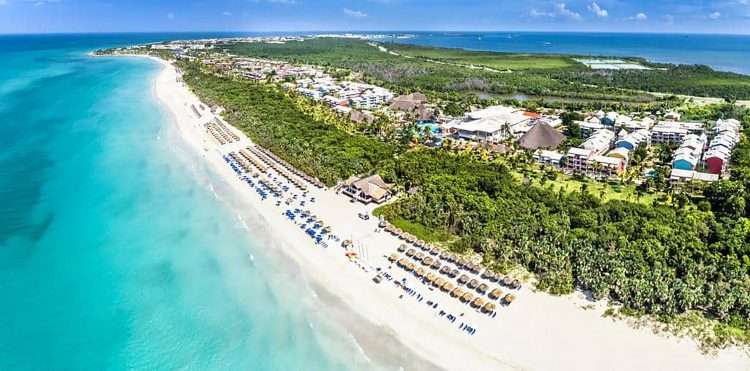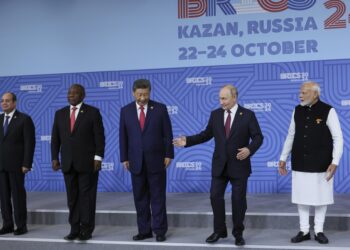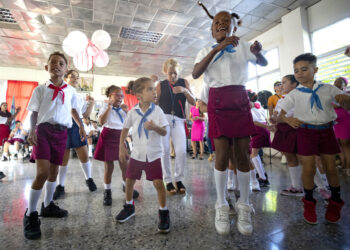When you take the road from the traffic circle, near the University, to Guardalavaca, in Holguín, you are amazed to see some kiosks full of different varieties of tropical fruits, in some I counted more than ten (guavas, pineapples, mameyes, mangoes in their different varieties, at least two varieties of bananas, papayas, melons) in addition to other vegetables — some show or television tomatoes, which is almost the same.
Then you’re surprised when you don’t see that variety of fruits on the buffet tables of the local hotels, several of them four and five stars. But there is no mystery, it happens that the farmers don’t want to sell to the hotels! And it happens that the hotels cannot buy from the farmers! And what is even more surprising, contrary to what happened a few years ago, both are “allowed” to do so.
But what happens is that at prices based on the rate of 24 CUP for one dollar, which is what hotels can pay, farmers don’t sell, while at prices that are “convenient” for them to sell, based on the informal or black-market rate, which is around 100 CUP per dollar, the hotels would see their cost specifications skyrocket. It is a simple currency distortion problem that makes our hotels, these and practically all the others, have the worst assortment of tropical fruits in the entire Caribbean.
Starting international tourism again after the pandemic, with the disadvantage of having very limited access to the U.S. market, with the consequences of the “reorganization” and with a limited ability to pay for supplies is an odyssey that in some way is compared to the other that started the sector at the end of the 1980s. It is even more like the odyssey of the 1990s, which took Cuban tourism from practically not appearing on the maps of Caribbean destinations to being positioned among the top four in the region and being among the ten most important destinations in the Americas.
It was done practically from scratch, with just a few buildings that had been hotels before but that were far from international tourism standards, with an infrastructure far removed from the needs of that industry, with very little “culture” of service standards demanded worldwide, with a non-hotel network — if it could be called that — with very little variety and quality. It was done as part of a concept that isolated tourists from the population and vice versa, trying to confine them to the invisible limits of the hotel premises. It was done without the Cubans being able to enter those hotels and even today it is not known if it was to watch out for the Cubans from the tourists or vice versa. It was done with the tremendous prejudice of seeing first the bad incomes from tourism — prostitution, pimping, habits and customs of the “consumer society” — before those others: effective employment, income from exports at the border, effective payments to enterprises in the country and above all, the Cuba image, which contributed to the country being able to take the path of economic growth.
There were so many prohibitions that threatened the competitiveness of the sector, that sometimes it is hard to believe that it has reached such an important space in the region.
But above all, it was done by competing with those other destinations that had arrived at the “tourism business” much earlier and generally thanks to international companies that had placed them on the world tourism map. Experience that our nascent tourism sector repeated, almost as the only possibility of being placed on that map or, as an economist would say, of being in the global chain.
And it was done, and we had 4.7 million tourists in one year (2018), with around 64,000 rooms in “state” hotels and another 20,000 rooms in the private sector.
Cuba currently has 77,809 hotel rooms, of which 44.5% have a five-star category, 29.6% four-star, 13.6% three and 12% another classification.
48% of the accommodation facilities belong to the Gaviota Group, 22% to Cubanacán, 18% to Gran Caribe and 12% to Islazul.
Of these figures, 50,000 rooms are managed by major foreign hotel companies, mainly Meliá, Iberostar, BlueDiamond, Roc, Barceló, Blau, Kempinski, Accor, NH, Axel, Be Live and Sirenis.
We have more rooms than ever before, but we don’t have enough tourists. In the first quarter of the year, the National Office of Statistics and Information of Cuba (ONEI) reported an occupation rate of 13.9% for the entire country.
Getting tourists in such a competitive region does not seem to be an easy task. Unlike Cuba, other Caribbean destinations have achieved a faster recovery. The reasons for how they have achieved this can be discussed, but it is a fact that must be reckoned with.
But tourism is much more than buildings-hotels. Tourism still needs many other “non-tourist” things.
Suppose then that the reorganization worked for the better in tourism, that Biden allowed more than he has allowed and that the non-payments to suppliers are not such and that the arrivals behave in another way and instead of the tourists received being at around 25% in 2018 are at 50%. Then we would be left with old debts to settle.
Let us think, for example, of something as old and as impactful as the Havana International Airport. The first and last impression of a tourist. Do they have the comfort they should? Having good airports, with first class comfort and first-class service is almost a requirement without which it is difficult to compete in our region. It is undoubtedly a disadvantage with which our tourism must deal day after day.
And rental cars, those that right now with only 13.9% occupancy, are so hard to find and rent. Those cars have possibly the most expensive rate of all the countries in the Caribbean region. They are not competitive prices at all. Who decides these rates can only do so knowing that he has a captive market and therefore can impose any price for a car. Could it be that there is no need for several other companies that provide this service and that compete with the oligopoly. What would be better for Cuba as a tourist country?
To these old, very old problems, new ones are added that affect tourists and tourism, but like the previous ones are not in the hands of the authorities of the sector, of the enterprises and of the tourist workers. They include everything from the new exchange dual exchange rate and the existence of a “plastic” currency, the freely convertible currency, to those associated with sensitive services for tourists, such as internal, urban or air transportation.
And although a part of the tourists’ time is spent in the hotel, especially of all those who stay under the “all-inclusive” modality, that other time spent outside the hotel is becoming more and more decisive.
That much needs to be done within the sector, this is undoubtedly true, that the sector needs its immediate environment to improve and thus be able to compete with its peers in the region, there is no doubt.
The truth, as Professor Perelló affirms, is that we are going through a new era and we must bear in mind that there is a new traveler who does not watch television, books his own flight, selects his hotel, organizes his excursions and that his mobile phone is an extension of his own body.
Are we prepared for this new traveler or are we still thinking of the typical traveler of the 20th century?










